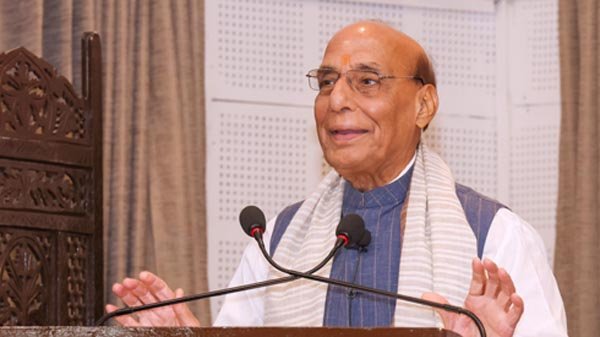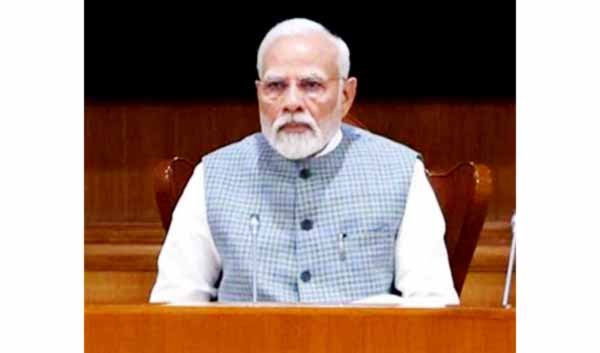New Delhi, Aug 27 (UNI) Fusion of technology and surprise are the main reason behind the growing complexity and unpredictably of modern-day warfare and there is a need to remain prepared for new innovations and unforeseen challenges while mastering existing technologies to stay ahead of the curve, Defence Minister Rajnath Singh said today.
In his plenary address at RAN SAMWAD, a first-of-its-kind Tri-service seminar on war, warfare and warfighting, at the Army War College in Dr Ambedkar Nagar, Madhya Pradesh, the Defence Minister said modern battles are no longer confined to land, sea, and air but now extend to outer space and cyberspace.
Satellite systems, anti-satellite weapons and space command centres are the new instruments of power, he said and added that not only defensive preparedness but also a proactive strategy was needed.
‘’Future wars will not merely be battles of weapons, they will be a combined play of technology, intelligence, economy and diplomacy. The nation which masters the triangle of technology, strategy and adaptability, will emerge as the true global power. This is the moment to learn from history and write a new one, this is the moment to anticipate the future and shape one.”
He said sheer numbers of soldiers or the size of weapon stockpiles are no longer enough as cyber warfare, artificial intelligence, unmanned aerial vehicles and satellite-based surveillance are shaping the wars of the future. Precision-guided weapons, real-time intelligence and data-driven information are the cornerstone of success in any conflict.
“Technology is advancing at such a pace that by the time we fully grasp one innovation, another emerges – completely altering the course of warfare. Unmanned Aerial Vehicles, hypersonic missiles, cyber-attacks, and AI-driven decision making are examples of tools that are bringing unexpected twists to modern conflicts. The most striking feature of this element of surprise is that it no longer has a permanent form. It keeps changing, always carrying uncertainty with it. And it is precisely this uncertainty that confounds adversaries, often becoming the decisive factor in the outcome of war.”
Mr Rajnath Singh said a country’s economic system, industrial structure, technological capabilities, education system – all these have become major components of security. In such a situation, the importance of communication becomes even greater.
National security is no longer just a matter of Armies but has become an issue of a whole-of-nation approach. The active role of industries, academia, media, technical institutes, and civil society is necessary.
Pointing out that India has never been a nation that seeks war or harbours aggressive intent, he said, however, but if someone poses a challenge, it becomes imperative that the nation responds with strength. “We do not want anyone’s land, but we are ready to go to any extent to protect our land. To do so, we must continuously enhance our defence preparedness. This is why training, technological advancement, and sustained dialogue with partners are of utmost importance.”
The Defence Minister also released the Technology Perspective and Capability Roadmap outlining the Armed Forces’ long-term modernisation plans over a 10-year period, focusing on bridging capability gaps and building technologically advanced forces.
The roadmap provides industry with an overview of the Armed Forces’ future capability requirements across various domains. Its purpose is to guide Indian industry and R&D institutions in aligning their innovation and production efforts with national Defence needs, fostering self-reliance, reducing dependence on imports and ensuring that the armed forces are optimally structured and equipped for future security challenges.











